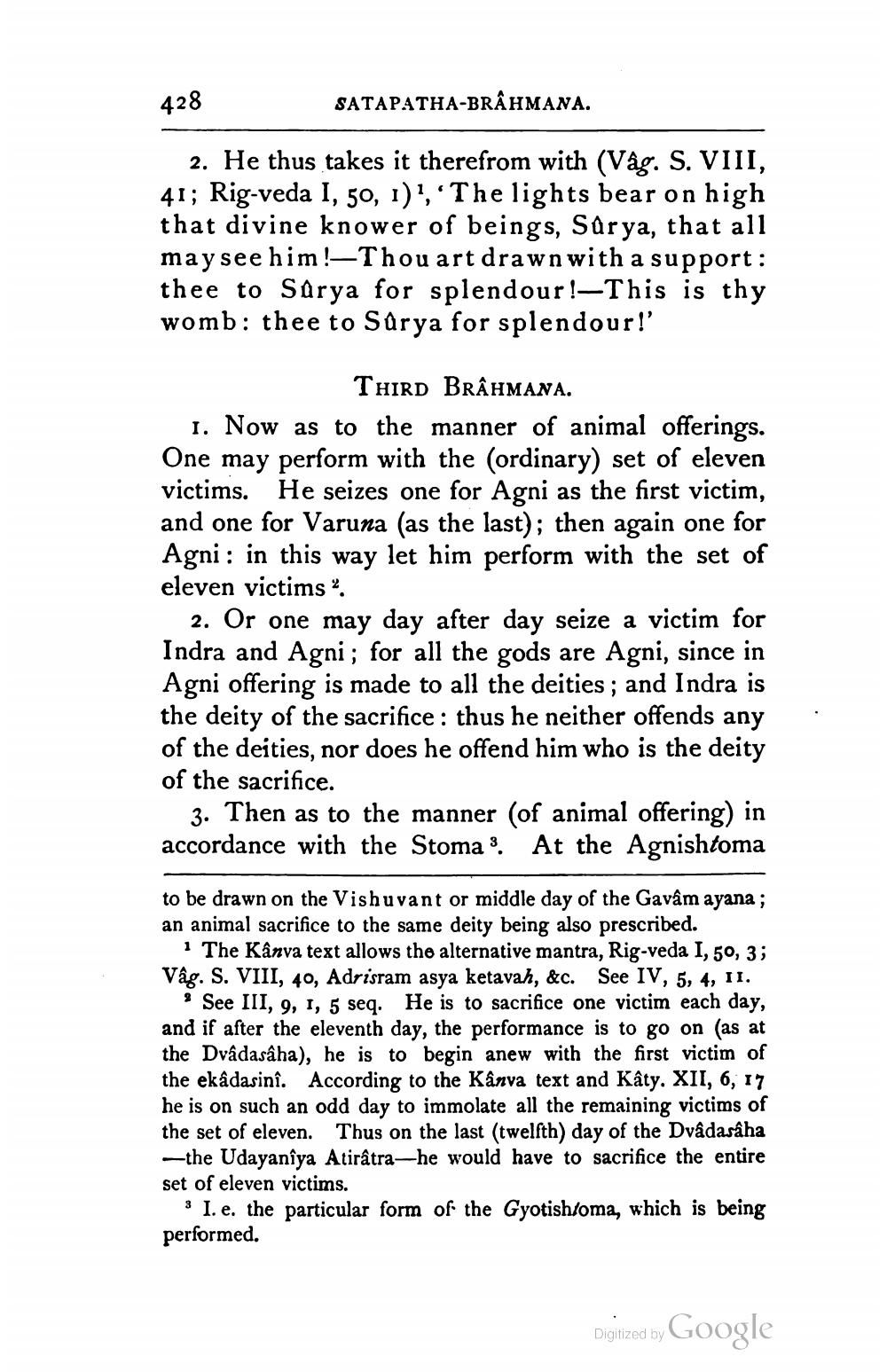________________
428
SATAPATHA-BRÂHMANA.
2. He thus takes it therefrom with (Vág. S. VIII, 41; Rig-veda I, 50, 1)', 'The lights bear on high that divine knower of beings, Surya, that all may see him!—Thou art drawn with a support: thee to Sarya for splendour!—This is thy womb: thee to Sûrya for splendour!'
THIRD BRÂHMANA. 1. Now as to the manner of animal offerings. One may perform with the (ordinary) set of eleven victims. He seizes one for Agni as the first victim, and one for Varuna (as the last); then again one for Agni: in this way let him perform with the set of eleven victims ?.
2. Or one may day after day seize a victim for Indra and Agni; for all the gods are Agni, since in Agni offering is made to all the deities; and Indra is the deity of the sacrifice : thus he neither offends any of the deities, nor does he offend him who is the deity of the sacrifice.
3. Then as to the manner (of animal offering) in accordance with the Stomas. At the Agnishtoma
to be drawn on the Vishuvant or middle day of the Gavâm ayana; an animal sacrifice to the same deity being also prescribed.
1 The Kânva text allows the alternative mantra, Rig-veda I, 50, 3; Våg. S. VIII, 40, Adrisram asya ketavah, &c. See IV, 5, 4, II.
* See III, 9, 1, 5 seq. He is to sacrifice one victim each day, and if after the eleventh day, the performance is to go on (as at the Dvadasaha), he is to begin anew with the first victim of the ekâdasinî. According to the Kanva text and Kâty. XII, 6, 17 he is on such an odd day to immolate all the remaining victims of the set of eleven. Thus on the last twelfth) day of the Dvadasaha -the Udayanîya Atirâtra-he would have to sacrifice the entire set of eleven victims.
3 I. e. the particular form of the Gyotish/oma, which is being performed.
Digjized by Google




